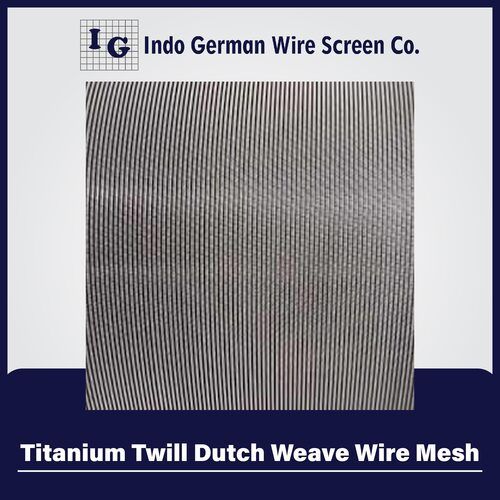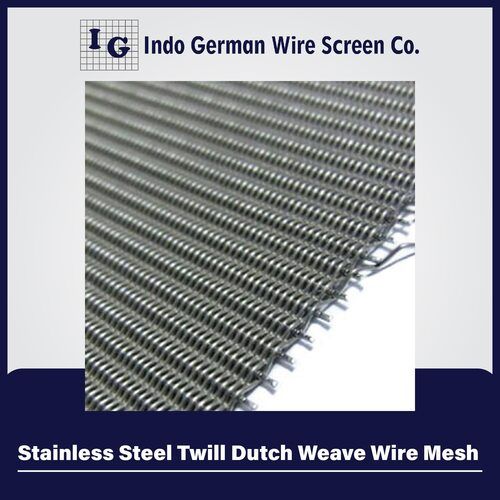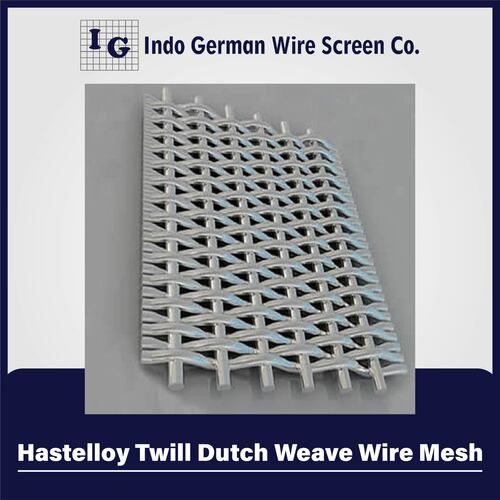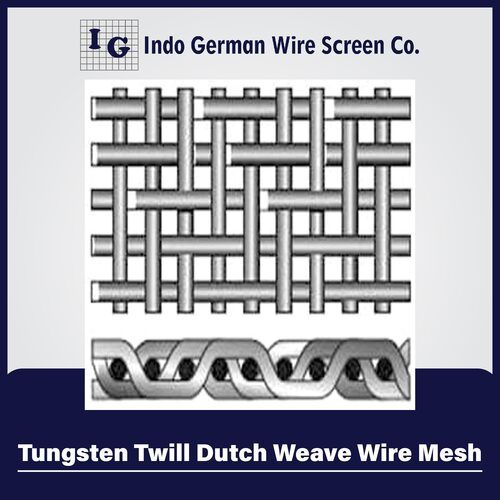Copper Twill Dutch Weave Wire Mesh
Price 50 INR/ Unit
Copper Twill Dutch Weave Wire Mesh Specification
- Length
- 1 to 30 meters (custom lengths available)
- Aperture
- 0.035 mm 2 mm (typical range)
- Wire Gauge
- Customizable as per requirement
- Surface Treatment
- Coated
- Hole Shape
- Rectangle / Oblong
- Product Type
- Wire Mesh
- Mesh Type
- Copper Wire Mesh
- Mesh Style
- Twill Dutch Weave
- Material
- Copper
- Alloy
- Pure Copper or copper alloys (on request)
- Application
- Other
- Dimensions
- Width up to 2 meters (customizable)
- Wire Diameter
- 0.025 mm 2 mm
- Weight
- Dependent on mesh count and wire diameter
- Color
- Copper
Copper Twill Dutch Weave Wire Mesh Trade Information
- Minimum Order Quantity
- 1 Unit
- Supply Ability
- 5000 Units Per Month
- Delivery Time
- 7 Days
About Copper Twill Dutch Weave Wire Mesh
Copper is ductile, malleable and has high thermal and electrical conductivity. Copper is resistant to atmospheric corrosion but attacked by oxidizing agents such as nitric acid, ferric chloride, cya nides, and ammonia acid compounds. Copper when exposed to the atmosphere it will naturally develop a thin green layer, known as patina. Coppers unique colour makes it a very popular option for many different types of users, including designers, artists, architects and homeowners.Exceptional Filtration Efficiency
Thanks to its twill Dutch weave pattern and low aperture ranges, the copper wire mesh achieves precise and reliable filtration performance. This makes it ideal for industrial and scientific applications requiring separation of minute particles, especially in demanding environments.
High Thermal and Corrosion Endurance
Coppers outstanding thermal conductivity enables the mesh to withstand high-temperature operations, while its inherent corrosion resistance is advantageous in non-oxidizing chemical processes. The meshs durability ensures a long service life even under challenging conditions.
Customizable Design for Versatility
The mesh can be tailored to specific project requirements, with customizable wire gauge, roll lengths (1 to 30 meters), widths (up to 2 meters), and alloy compositions. Such flexibility makes it suitable for a broad range of uses in filtration, screening, shielding, and more.
FAQs of Copper Twill Dutch Weave Wire Mesh:
Q: How is the twill Dutch weave pattern beneficial for filtration applications?
A: The twill Dutch weave pattern offers a unique interlacing of warp and weft wires, resulting in lower opening rates. This structure ensures highly effective and accurate fine filtration, making the mesh suitable for applications that require the separation of tiny particles or solids from liquids or gases.Q: What industries commonly use copper twill Dutch weave wire mesh?
A: This wire mesh finds extensive usage in the chemical industry, oil and gas refineries, laboratory screening, automotive components, and electromagnetic shielding applications. Its fine filtration capabilities and physical properties cater to the rigorous demands of these sectors.Q: When should custom specifications be requested for copper wire mesh?
A: Custom specifications are advisable when standard sizes, mesh counts, or roll lengths do not meet your project requirements. You can request customized wire gauge, aperture, mesh count, length, width, or alloy composition to suit specialized filtration or screening needs.Q: Where is the mesh typically installed or used?
A: Copper twill Dutch weave wire mesh is installed in filtration units, laboratory sieves, industrial screens, automotive parts for filtration and shielding, and various machinery used in chemical processing plants, depending on the intended application.Q: What is the process for manufacturing and packing this mesh?
A: The mesh is woven from copper wires according to the required twill Dutch weave specifications, then surface treated (if needed), and wound into rolls. Each roll is packed in moisture-proof materials to ensure product protection and longevity during transit and storage.Q: How does excellent thermal conductivity of copper mesh benefit industrial applications?
A: Excellent thermal conductivity allows the copper mesh to operate efficiently in high-temperature environments, making it suitable for filtration and screening processes where thermal resistance is a critical requirement, such as in chemical plants and heat exchangers.Q: What are the advantages of using copper wire mesh with coated surfaces?
A: A coated surface enhances the meshs resistance to corrosion, ensures consistent performance in harsh environments, and can provide additional protection against physical or chemical wear, which increases the meshs operational life span.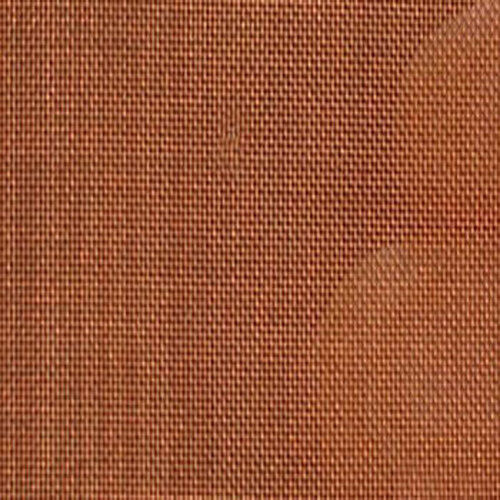

Price:
- 50
- 100
- 200
- 250
- 500
- 1000+
More Products in Twill Dutch Weave Wire Mesh Category
Titanium Twill Dutch Weave Wire Mesh
Price 50 INR / Unit
Minimum Order Quantity : 1 Unit
Product Type : Wire Mesh
Mesh Style : Plain Mesh
Application : Other
Material : Other, Titanium
Stainless Steel Twill Dutch Weave Wire Mesh
Price 50 INR / Unit
Minimum Order Quantity : 1 Unit
Product Type : Wire Mesh
Mesh Style : Other , Twill Dutch Weave
Application : Other
Material : Stainless Steel
Hastelloy Twill Dutch Weave Wire Mesh
Price 50 INR / Unit
Minimum Order Quantity : 1 Unit
Product Type : Wire Mesh
Mesh Style : Plain Mesh
Application : Other
Material : Other, Inconel
Tungsten Twill Dutch Weave Wire Mesh
Price 50 INR / Unit
Minimum Order Quantity : 1 Unit
Product Type : Other, Twill Dutch Weave Wire Mesh
Mesh Style : Woven Mesh
Application : Other, Filtration for chemical, oil, and aerospace industries; sieving; shielding; catalyst recovery
Material : Other, Pure Tungsten
 |
INDO GERMAN WIRE SCREEN CO.
All Rights Reserved.(Terms of Use) Developed and Managed by Infocom Network Private Limited. |
 English
English Spanish
Spanish French
French German
German Italian
Italian Chinese (Simplified)
Chinese (Simplified) Japanese
Japanese Korean
Korean Arabic
Arabic Portuguese
Portuguese
 Send Inquiry
Send Inquiry
